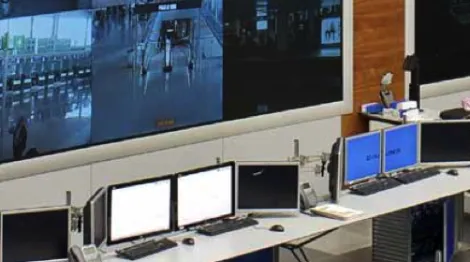The Importance of Linking the Smart Grid with the Industrial World
In a world where everything is increasingly connected, the level of communications is a determining factor in achieving success in any type of systems integration.


Building, transportation, and industry are the sectors that account for the most energy consumption worldwide and, therefore, these same three sectors are where digitalization can and is having a greater impact.
If we also consider that, driven by environmental reasons and political decisions, we are currently witnessing a paradigm shift, from a centralized electricity generation to a more decentralized one, with smaller producers, who generate energy in an alternative way (and require connection to control centers), we will agree that the main contribution that digitalization brings to the energy world is the possibility, not only of achieving the integration of different systems but also -and very importantly- of breaking barriers and interconnecting different sectors.
Smart grids not only have to transmit power but also information.
For years, from Becolve Digital we have been contributing products and technological knowledge to the industrial sector, interconnecting all kinds of robots, sensors, equipment, automation/PLCs, and in general, any device with the need to connect to a network to communicate its data.

Intersectoral Communication Protocols
Based on this experience, we want to highlight the importance of a very necessary communications link between the energy sector and the industrial sector. The need to connect generators, filters, and protection equipment (with Modbus protocol, for example) to public services that require standards such as those defined by IEC (communication protocols 60870, 61850) is a sample of this.
The inverse is also true, where it is necessary to consider the integration of intelligent electronic devices (IEDs) with protection, control, and monitoring functions in electrical substations (IEC 61850 standard) with PLC systems from the main manufacturers in the industry: ABB, Siemens, Schneider Electric, Mitsubishi, Rockwell Automation, using in each case their respective industrial communication protocols.
To solve these growing intersectoral communication needs, we have powerful solutions in our “house”, including our LK Remote or Smart Grid Gateway (SG-Gateway), capable of communicating the IEC-61850 and IEC 60870 protocols used in the energy sector, with the main protocols used in the industry (Modbus, Profibus, Ethernet, Series RS232/485, 3G/4G). Taking into account that, for this, concepts of the Smart Grid, such as adaptation to demand (Demand & Response) and VHP ready for virtual generation plants (VPP).

A virtual power plant (VPP) is a group of distributed generation facilities that are collectively managed by a central control entity. Each unique generator that belongs to the VPP needs a gateway to communicate with the remote control software that manages the entire network. The SG-gateway enables this requirement and supports the VHPready industry standard for virtual power plants.
On the other hand, Demand Response (DR) is an automated control mechanism in electrical networks by which the demand side adapts to the volatile generation capacity of renewable energies (days with more sun or less wind). Our gateway can connect the factory with the DR aggregator network operation center at each industrial site.
This is one of the most important aspects of generation systems based on renewable energies and hence the importance of an integrated approach between electricity and telecommunications networks.
Another important challenge in energy digitalization is found in cybersecurity; the LK Remotes or SG gateways, therefore, enable us to use Secured VPNs, to transport the I/O information from the field to SCADA systems safely.
Smart Grid in the Industrial World
The communications network must allow the integration, communication, and data management of the components of the smart electrical network while maintaining security.
In a world where everything is increasingly connected, the level of communications is a determining factor in achieving success in any type of systems integration.





